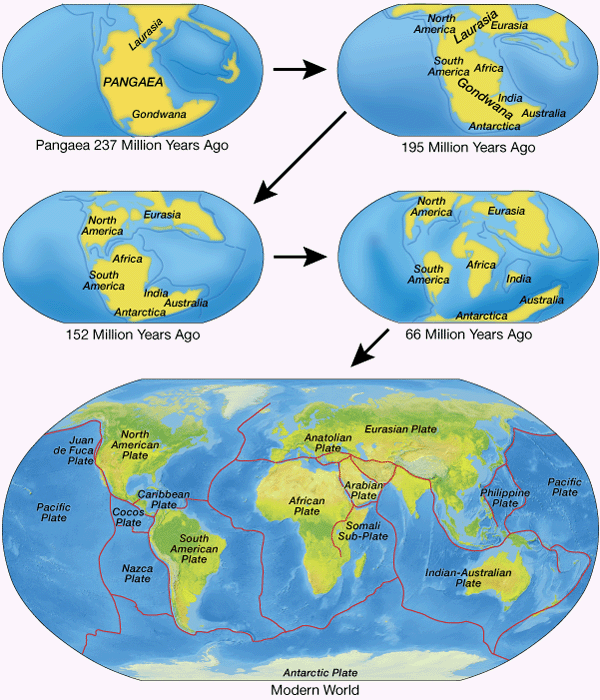

The Himalayas, for example, were formed after the Indian subcontinent broke off the eastern side of Africa and crashed directly into Asia. The concept of plate tectonics is behind some of modern Earth’s most striking features. Present-day North America broke away from Europe and Africa, and as the map highlights, Atlantic Canada was once connected to Spain and Morocco. The most visible evidence of this split is in the similar shape of the coastlines of modern-day Brazil and West Africa. Over time, this rift zone would become the Atlantic Ocean. Breaking Up is Hard to DoĪround 200 million years ago, magma began to swell up through a weakness in the earth’s crust, creating the volcanic rift zone that would eventually cleave the supercontinent into pieces.

The strong contrast between the Pangea supercontinent and Panthalassa is believed to have triggered intense cross-equatorial monsoons.īy this unique point in history, plants and animals had spread across the landmass, and animals (such as dinosaurs) were able to wander freely across the entire expanse of Pangea. The extreme temperatures revealed by climate simulations are supported by the fact that very few fossils are found in the modern day regions that once existed in the middle of Pangea. Similar to parts of Central Asia today, the center of the landmass is thought to have been arid and inhospitable, with temperatures reaching 113✯ (45✬).

The remainder of the planet was an enormous ocean known as Panthalassa.Īs time goes by, scientists are beginning to piece together more information on the climate and patterns of life on the supercontinent. Pangea began developing over 300 million years ago, eventually making up one-third of the earth’s surface. Pangea was the latest in a line of supercontinents in Earth’s history.


 0 kommentar(er)
0 kommentar(er)
